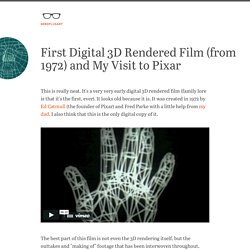

How 24 Commodore Amiga 2000s created Babylon 5 – GenerationAmiga.com. Babylon 5 is an American space opera television series first released in 1993.

Babylon 5, set primarily between the years 2257 and 2262, depicts a future where Earth has a unifying Earth government and has gained the technology for faster-than-light travel. Colonies within the solar system, and beyond, make up the Earth Alliance, which has established contact with other spacefaring species. Ten years before the series is set, Earth itself was nearly defeated in a war with the spiritual Minbari, only to escape destruction when the Minbari unexpectedly surrendered at the brink of victory; since then, Earth has established peaceful relationships with them.
It was one of the first television shows to use computer technology in creating visual effects, rather than models and miniatures, primarily out of budgetary concerns; Straczynski estimated that each of their episodes cost $650,000 to make. But did you know that the visual effects were achieved using Amiga-based Video Toasters at first? Side Effects Software – 25 years on. This year marks the 25th anniversary of Side Effects Software.

The company's Houdini product rides high as the go-to tool for procedural and effects animation. We talk to co-founder, chief executive officer and president of Side Effects Kim Davidson, and two of Side Effects' staff honored at this year's Sci-Tech Oscars, Andrew Clinton and Mark Elendt, about the invention and integration of micro-voxels in the Mantra renderer. This work allowed, for the first time, efficient rendering of volumetric effects such as smoke and clouds in a micro-polygon imaging pipeline. Listen to our interview with Kim Davidson below: [fx_audio src="/wp-content/uploads/2012/02/sidefx.mp3" link="/wp-content/uploads/2012/02/sidefx.mp3"] Prisms Before there was Houdini there was Prisms, which was based on in-house code written for the computer production company Omnibus.
Prisms or the Action 3D animation module at its core was the first of the company's products. Today Modeling - Most geometry entities incl. Side Effects Software – 25 years on. This year marks the 25th anniversary of Side Effects Software.

The company's Houdini product rides high as the go-to tool for procedural and effects animation. We talk to co-founder, chief executive officer and president of Side Effects Kim Davidson, and two of Side Effects' staff honored at this year's Sci-Tech Oscars, Andrew Clinton and Mark Elendt, about the invention and integration of micro-voxels in the Mantra renderer. This work allowed, for the first time, efficient rendering of volumetric effects such as smoke and clouds in a micro-polygon imaging pipeline. Listen to our interview with Kim Davidson below: [fx_audio src="/wp-content/uploads/2012/02/sidefx.mp3" link="/wp-content/uploads/2012/02/sidefx.mp3"] Prisms Before there was Houdini there was Prisms, which was based on in-house code written for the computer production company Omnibus. How the 1940s Superman Cartoon Changed Eveything. Making of the Computer Graphics for Star Wars (Episode IV) Adam Powers (1981) First Digital 3D Rendered Film (from 1972) and My Visit to Pixar.
This is really neat.

It's a very very early digital 3D rendered film (family lore is that it's the first, ever). It looks old because it is. It was created in 1972 by Ed Catmull (the founder of Pixar) and Fred Parke with a little help from my dad. I also think that this is the only digital copy of it. The best part of this film is not even the 3D rendering itself, but the outtakes and "making of" footage that has been interwoven throughout, including footage of a plaster replica of Ed's hand onto which he is meticulously mapping the polygon vertices that make up the three dimensional model (around 1:30).
The film fell into my hands because Ed and my dad were good friends and office mates at the University of Utah in the 1970s where they were both pursuing upper graduate degrees in computer science. A couple of years ago, Ed was speaking at the University of Utah (giving, I believe, some version of this talk) and ran into my uncle. A few months later we took a plane to SFO for the tour. 40 Year Old 3D Computer Graphics (Pixar, 1972)